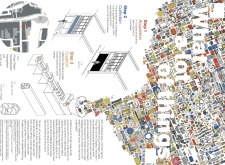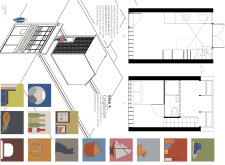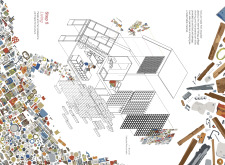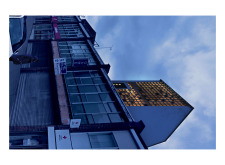5 key facts about this project
This project represents a commitment to enhancing community ties through architecture. It employs a unique methodology that emphasizes environmental responsibility by using recycled materials, fostering sustainable practices among residents. The spatial arrangement centers around creating an inviting atmosphere that promotes social interaction, reflecting the project's aim to serve as a gathering place for the community.
Design Methodology and Unique Approaches
"What a Lot of Things" distinguishes itself through its innovative approach to materiality and user engagement. The fundamental design strategy involves the stages of acquisition, collection, and creation. By relying on materials such as high-density polyethylene (HDPE) and recycled plastics, the project prioritizes sustainable construction practices. The integration of salvaged local materials establishes a direct connection between the residents and their environment, reinforcing the importance of recycling and community involvement.
Furthermore, the architectural design embraces an open-plan layout that facilitates natural light and allows for versatile usage of space. This adaptability is a direct response to the needs of the community, accommodating various activities from grocery shopping to communal gatherings. The exterior features overlapping geometric forms, which not only enhance the aesthetic appeal but also promote airflow and natural ventilation.
Architectural Details and Functional Aspects
The project incorporates several functional elements geared toward improving user experience. Interior spaces are designed for efficiency, with adequate storage and communal areas that encourage interaction. Thoughtful placement of large windows ensures that each room receives ample natural light, thereby reducing the need for artificial lighting. The use of durable materials ensures longevity while maintaining minimal environmental impact.
By creating fluid transitions between indoor and outdoor spaces, the architecture invites interaction with the surroundings. The landscaping complements the design, strategically incorporating low-maintenance plants that align with the sustainability focus. The community aspect is further enhanced by features such as shared seating areas and outdoor spaces, which facilitate gatherings and enhance social dynamics.
For a comprehensive understanding of this project, readers are encouraged to explore the project's presentation, including architectural plans, architectural sections, architectural designs, and architectural ideas. These detailed documents provide further insight into the unique characteristics and functional elements that define "What a Lot of Things."


























